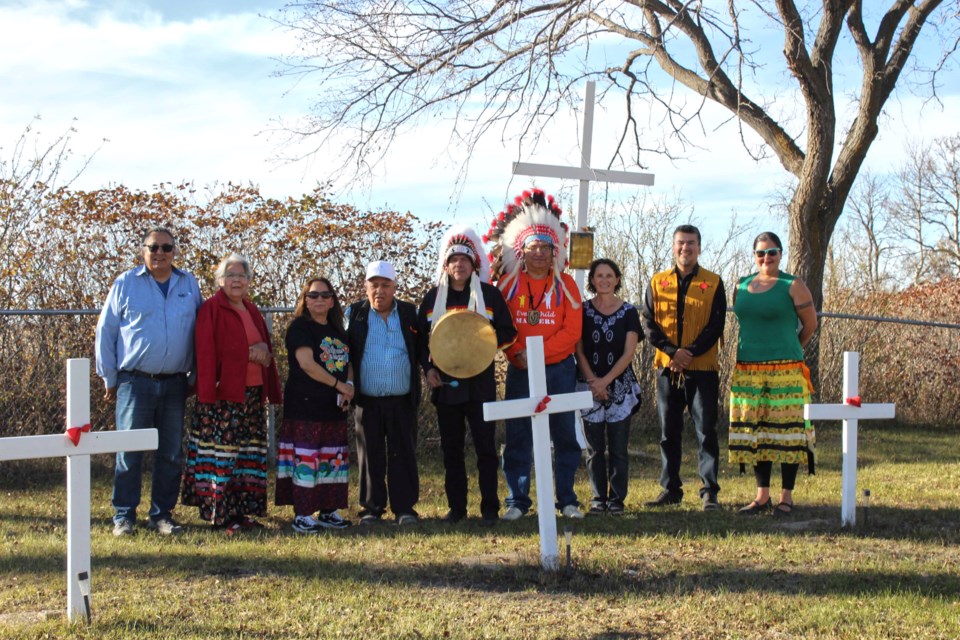During the final part of a ceremony to honour the children buried at the Elkhorn Residential School cemetery, the crackle of a campfire and smoke from a smudge accompanied expressions of thanksgiving with the passing of the eagle feather. Manitoba Keewatinowi Okimakanak (MKO) Grand Chief Garrison Settee, responsible for 26 tribes, led a small group to the burial grounds of the children who died while attending the residential school.
The residential school operated at Elkhorn from 1888 to 1949 and here, children were buried a long time ago and far from their home communities. Children who perished from illness or other causes.
On this warm, sunny Monday afternoon, Oct. 18, people from northern Manitoba along with Ken Whitecloud from Sioux Valley and Alicia Hoemsen were gathered.
One woman was thankful for Sioux Valley’s late Doris Pratt and her role at the school in translation, assisting both the English-speaking teachers and Aboriginal children. Another man reported he was taking better care of himself now. One woman, a writer, found it important to get to know the stories and history of First Nations.
As the sharing time drew to a close, words from the grand chief and the religious leader indicated forgiveness and thankfulness. Spirits were high as this somber event gave way to a sense of closure.
Ken Whitecloud, from Sioux Valley had assisted with the day’s preparation. He said that while many of the Sioux Valley girls came to this nearby school, the boys were sent elsewhere. “My dad went to Lebret, Saskatchewan near Qu’Appelle. A lot of the people buried here (Elkhorn) are from way up north.” (The Lebret Indian Industrial Residential School operated between 1884 – 1998.)
Whitecloud spoke of a family connection with Alicia Hoemsen (also attending), through their mothers. There was a fence surrounding the residential school, but Whitecloud’s mother made the acquaintance of Hoemsen’s mother through the fence. “My mom went to residential school here. My mom used to walk with her mom when she walked to school, on opposite sides of the fence.”
Grand Chief Settee said, “Today we came to have a ceremony to honour the young ones who were buried here, the young ones who never made it home. I felt that it was important that we do this, even though after many years of the residential schools shutting down, it’s important that we come in a good way, to feast with them because they probably never had that kind of honouring and recognition.
“We decided to come and say, ‘you are not forgotten’. They say every child matters. Their lives matter too, their spirits matter to us because not only now, but for eternity in the spirit world, they live.”
He explained that the feast included traditional Bannock and berries, along with chocolate bars, something the children would have liked.
Settee acknowledge the owner of the land that surrounds the cemetery and the community, thankful for the well-kept condition of the graveyard.
Weeks earlier the MKO grand chief had also attended the Brandon residential school at Turtle Crossing on the Truth and Reconciliation Day. The ceremonies that have transpired since the discovery of children buried at the B.C. residential school have provided closure.
“When we first went to Brandon (residential school) a lot of them were so happy because they never had a chance to do that,” says the grand chief. “What we’re doing is not just for us, it’s on behalf of everybody from the North because these could have been their relatives. We come in their stead.”




